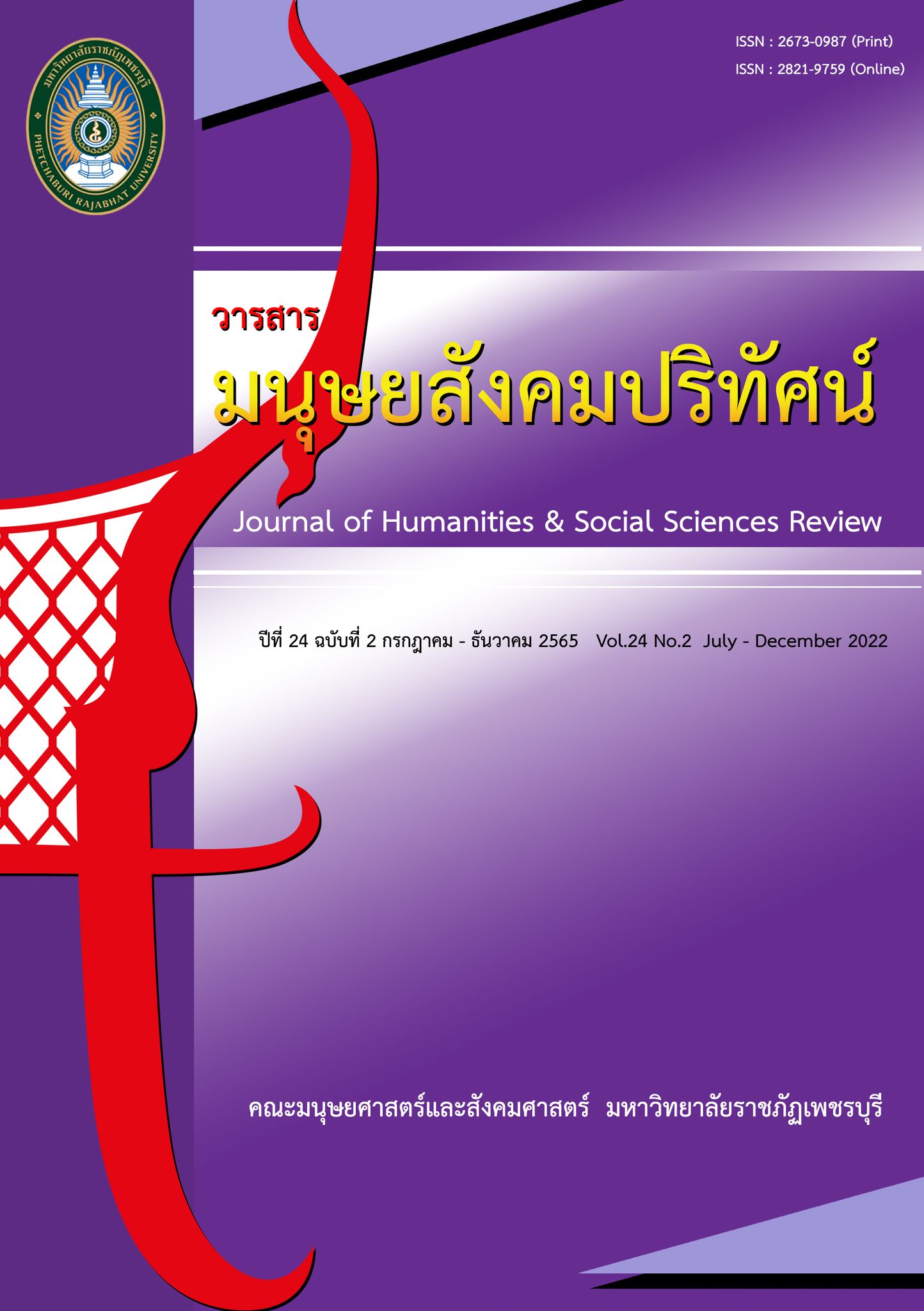The Development of Activity Based Learning Management Model Integrated with Technology to Promote Students' Innovativeness and Creative Products
Main Article Content
Abstract
The objectives of this research were 1) to study the need for the development of an Activity-based Learning Management model in combination with technology to promote innovators and creativity for students and 2) to develop and find out the quality of the learning management model in learning management. The research method was conducted in the form of research and development. The target groups were experts, administrators, teachers, and students in demonstration schools, Silpakorn University which consisted of 89 people. The research instruments were 1) a document analysis form 2) an interview form 3) a group discussion question 4) a questionnaire and 5) an assessment form. The statistics used in the research were Percentage, Mean, Standard Deviation, and Content Analysis. The results of the research were described as follows: 1) based on the analysis of the fundamental data and the needs regarding the development of an activity-based learning management model in combination with technology to promote innovators and creativity for students, it was found that the school administrators, head of learning department, teachers, experts and students of the Silpakorn University demonstration school need practical learning management activities using activities as a base technology with the Integration with social media and various applications to produce creative workloads. The measurement and evaluation was based on the actual conditions of the work and students involved with the assessment 2) there were 5 components for the activity-based learning management model combined with technology to promote innovators and creativity for students: 1) Principle 2) Objective 3) The Six-steps Process for organizing learning activities which included: step 1: providing experiences and encouragement and, step 2: providing new knowledge, step 3: organizing activities, step 4: work presentation, step 5: exchanging knowledge, and step 6: improvement and implementation and 4) Measurement and Evaluation and 5) Success Factors. The quality of the learning model is at a high level (M = 4.16, S.D. = 0.36).
Article Details
1. Any views and comments in the article are the authors’ views. The editorial board has not to agree with those views and it is not considered as the editorial board’s responsibility. In case, there is any lawsuit about copyright infringement, it is considered as the authors’ sole responsibility.
2. The article copyright belonging to Faculty of Humanities and Social Sciences, Phetchaburi Rajabhat University are copyrighted legally. Republication must be received direct permission from the authors and Phetchaburi Rajabhat University in written form.
References
กระทรวงศึกษาธิการ. (2551). หลักสูตรแกนกลางการศึกษาขั้นพื้นฐาน พุทธศักราช 2551 (ฉบับปรับปรุง 2560). กรุงเทพฯ: ชุมนุมสหกรณ์การเกษตรแห่งประเทศไทย.
_______. (2553). การเรียนรู้แบบ Activity-Based Learning. สืบค้นเมื่อ 25 พฤษภาคม 2564, จาก https://www.moe.go.th/moe/th/news/detail.php?NewsID=16207&Key=news15.
กระทรวงศึกษาธิการ. สำนักงานเลขาธิการสภาการศึกษา. (2561). แผนการศึกษาแห่งชาติ พ.ศ. 2560-2579. กรุงเทพฯ: พริกหวานกราฟฟิค.
_______. (2562). มาตรฐานการศึกษาของชาติ พ.ศ. 2561. กรุงเทพฯ: 2562.
จริมจิต สร้อยสมุทร. (2564). การพัฒนารูปแบบการจัดการเรียนรู้ฯ ภาษาอังกฤษโดยใช้กิจกรรมเป็นฐานเพื่อส่งเสริมความสามารถด้านการพูดสื่อสารภาษาอังกฤษและความสุขในการเรียนโดย ใช้บริบทท้องถิ่นสำหรับนักเรียนชั้นประถมศึกษา. วิทยานิพนธ์ปรัชญาดุษฎีบัณฑิต สาขาวิชาหลักสูตรและการสอน คณะศึกษาศาสตร์ มหาวิทยาลัยศิลปากร.
วิโรจน์ ลักขณาอดิศร. (2552). สร้างลูกให้เก่งด้วย BBL. สืบค้นเมื่อ 1 มีนาคม 2564, จาก http://www.igetweb.com/www/sureesri/index.php?mo=3&art=377603.
สถาบันพัฒนาครู คณาจารย์และบุคลากรทางการศึกษา. (2558). โครงการพัฒนาสมรรถนะของครูตามระบบ การพัฒนาครูและบุคลากรทางการศึกษา. กรุงเทพฯ: กระทรวงศึกษาธิการ.
Aslem, M., Ahmed, M., and Mazherm, M. (2015). Enhancing communication skills of ESL primary students through activity based learning. European Journal of Language Studies, 2(1), 1-11.
Sithsungnoen, C., and Chanintaraphum, A. (2021). The development of learning activities using activity-based learning to enhance creative learning management ability of pre-service teachers, Faculty of Education, Silpakorn. Academic journal Phetchaburi Rajabhat University, 11(2): 38 - 48.
Stubbs, S. (2011). What is inclusive education? concept sheet. save the children (UK). Retrieved September 9, 2021, from http://www.eenet.org.uk/theory_practice/whatisit.shtml.
Stößlein, M. (2009). Activity-based learning experiences in quantitative research methodology for (time-constrained) young scholars - course design and effectiveness. Changchun: School of Management, Jilin University.


